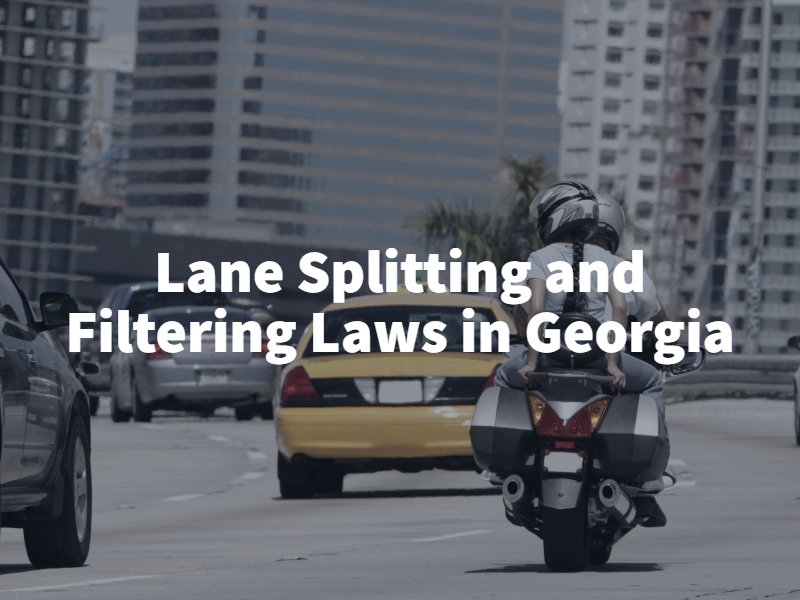
There are plenty of motorcycle enthusiasts in Georgia. Staying safe is the priority of everyone on the roadway, but motorcyclists face more risks than those in passenger vehicles. There are two practices known in the motorcycle community that many people may not be aware of – lane filtering and lane splitting. Understanding what this is and whether or not they are legal in Georgia is important to riders and drivers alike.
What is lane splitting?
Lane splitting (also referred to as white lining) is defined as a motorcyclist riding between rows of stopped or moving vehicles in the same lane. This includes riding between vehicles on both divided and undivided streets, roads, or highways. To simplify things, lane splitting is basically turning the dotted line on a roadway into a temporary lane just for motorcycles.
What is lane filtering?
Lane filtering is slightly different, as it refers to a motorcycle making its way through slow-moving or stationary traffic, such as at a stoplight or other type of traffic jam. This does not involve a rider operating between two moving four-wheeled vehicles, but rather continually getting in front of slow-moving or stopped vehicles to move to the front of the line. The motorcycle riders usually use this technique to get to the front of the line at a stoplight so they can take off swiftly to avoid being sandwiched between two vehicles in a rear-end collision.
What is the difference?
The difference between lane splitting and lane filtering usually revolves around the speed at which the practice occurs and the context in which they are practiced. In general, lane splitting occurs (and is most beneficial) during rush hour traffic and occurs at higher speeds. Lane filtering usually occurs in all types of traffic at intersections and at slower speeds. For the purposes of laws, most states have considered lane filtering to be the same thing as lane splitting.
What is legal in Georgia?
Both lane splitting and lane filtering are hot topics for Georgia motorcycle riders. In this state, lane splitting is prohibited. Any motorcyclist that gets into an accident while practicing lane splitting could be held liable for any personal injuries or damages they cause. Lane filtering is also illegal in Georgia, though there have been many petitions to make this practice legal.
Are there benefits to lane sharing actions by motorcyclists?
Whether or not lane splitting or lane filtering should be legal is the topic of serious debate in Georgia and throughout the United States. A few states (California, Utah, Montana, and Arizona) have legalized a form of lane filtering or lane splitting. According to a U.C. Berkley study, lane splitting can be done safely in traffic moving at 50 mph or less and if the motorcyclists do not exceed the speed of other vehicles by more than 15 mph. U.C. Berkeley says that riders who practice lane splitting are much less likely to be rear-ended than non-lane-splitting riders.
If 10% of drivers commuted by motorcycle, congestion and the associated time loss would be reduced by 40% according to one study conducted in Belgium- where lane splitting is legalized.
Other important rules for motorcyclists in Georgia
Georgia law clearly states that all motorcyclists must operate their vehicles safely. Motorcycles are considered to be vehicles, just like any other passenger vehicle on the roadway. Unlike many other states, Georgia has a strict motorcycle helmet law in place. All motorcycle riders in Georgia must wear a helmet. Not only is this the law, but helmets are proven to reduce the risk of serious open head or traumatic brain injuries for riders.

